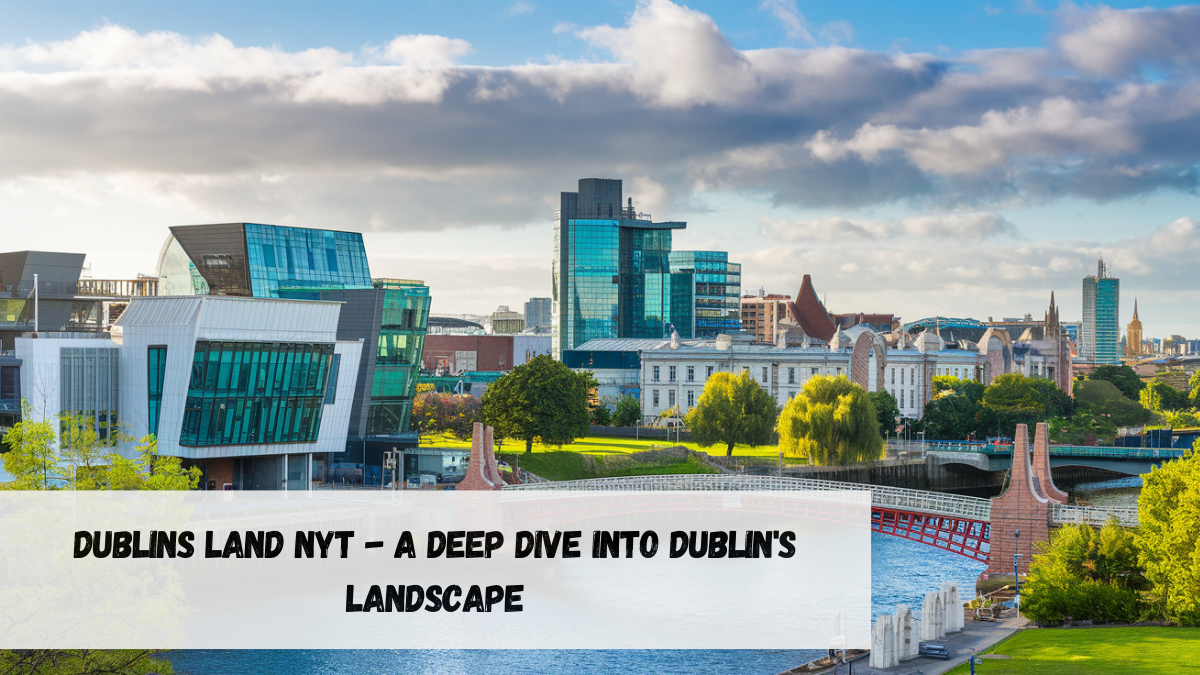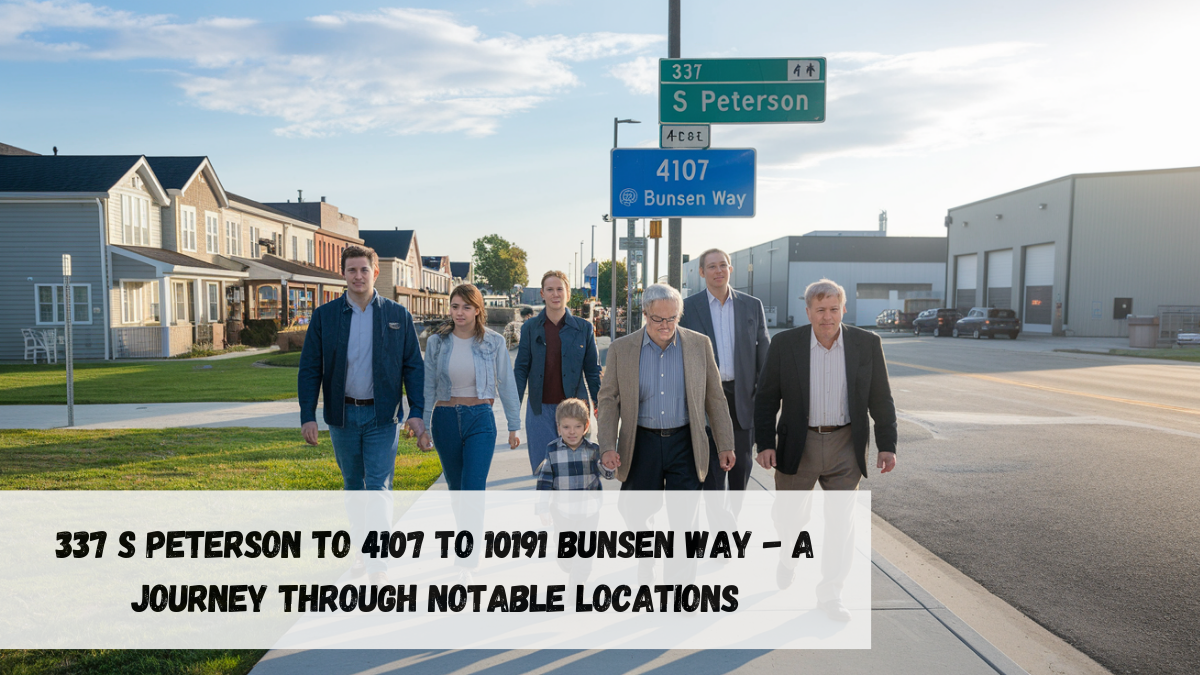Introduction to “Dublins Land Nyt”
The phrase “dublins land nyt” has gained considerable attention recently, especially in discussions about Dublin’s land use, development policies, and historical evolution. The New York Times (NYT) has covered various aspects of Dublin’s development, highlighting its challenges and achievements. Dublin, the capital city of Ireland, has an intriguing story to tell—one that spans centuries of growth, cultural enrichment, and socio-economic shifts.
In this article, we take a closer look at Dublin’s land—its history, current issues, future prospects, and why it has become a topic of discussion internationally. Whether you’re curious about the historical evolution of Dublin’s neighborhoods or want to understand the recent challenges surrounding land use, this guide will provide a thorough exploration.
Dublin’s Land: A Historical Perspective
Dublin’s history can be traced back over a thousand years, with its land development reflecting the changing tides of power, culture, and economic priorities. Here’s a detailed look at how Dublin’s land has evolved over time:
1. Medieval Roots: The Viking Settlement
The story of Dublin began in the 9th century with the arrival of the Vikings. They established a small trading post along the River Liffey, which quickly grew into a fortified settlement. Land distribution at the time was fairly rudimentary, with plots allocated to traders, warriors, and artisans. The Viking legacy still influences the geography of Dublin, especially in areas like Wood Quay, where archaeological findings highlight this early urban structure.
2. The Anglo-Norman Era
In the 12th century, the Anglo-Normans conquered Dublin, ushering in new phases of land control and fortification. The Anglo-Norman influence brought organized urban planning, with stone walls constructed around the city, creating defined boundaries that shaped Dublin’s growth for the next several centuries. The medieval streets, which are still evident in the heart of Dublin, reflect this structured approach to land use.
3. British Rule and the Georgian Period
The 18th and 19th centuries marked a period of significant expansion under British rule. During the Georgian period, Dublin was reshaped, becoming a city known for its distinctive architecture and carefully planned streets. Elegant townhouses were built around grand squares like Merrion Square and St. Stephen’s Green. Much of Dublin’s central land was owned by British landlords, which left deep socio-economic divides that impacted the city even after Ireland’s independence.
4. Post-Independence Changes
After gaining independence from Britain in 1922, Dublin underwent substantial changes. The focus was on reclaiming and redistributing land to benefit Irish citizens rather than the former colonial elite. Large estates were divided, and the development of public housing became a key government policy. The 20th century saw a shift towards suburbanization, as the city expanded outward to accommodate a growing population.
5. The Celtic Tiger Era
The Celtic Tiger era in the 1990s and early 2000s brought unprecedented economic growth to Ireland. Dublin, being the capital, experienced rapid urban development. During this period, there was a significant increase in property values, and land use shifted towards high-density residential and commercial projects. The boom left an indelible mark on Dublin’s land, as it encouraged the building of high-rise apartments and commercial districts, transforming the city’s skyline.
Why “Dublins Land Nyt” is Making Headlines
The concept of “dublins land nyt” has caught the interest of international media, including the New York Times, for several reasons. This coverage has highlighted both the opportunities and challenges that Dublin faces as it continues to grow:
1. Housing Crisis and Affordability Issues
One of the most pressing issues facing Dublin today is the housing crisis. The demand for housing has skyrocketed, particularly in the past decade, due to several factors including an influx of multinational corporations, increased immigration, and demographic changes. Rental prices have surged, making Dublin one of the most expensive cities to live in Europe. The lack of affordable housing options has been a focal point in NYT articles, emphasizing its impact on both the local community and Ireland’s broader socio-economic landscape.
2. Dublin’s Role as a Tech Hub
Dublin has become a major hub for technology companies. Tech giants like Google, Facebook, and Amazon have their European headquarters in the city. The influx of tech workers has not only boosted the local economy but also created a significant strain on the real estate market. NYT articles have pointed out how this rapid development, while economically beneficial, has exacerbated the housing shortage and changed the dynamics of Dublin’s land use, pushing prices up and affecting the availability of residential properties.
3. Urban Redevelopment and Gentrification
Urban redevelopment initiatives in areas like Dublin Docklands have transformed previously neglected parts of the city into vibrant commercial and residential spaces. The Docklands, often referred to as the “Silicon Docks,” have attracted substantial international investments, giving Dublin a modern edge. However, this gentrification has also led to concerns about the displacement of long-time residents and the changing character of historic neighborhoods. These themes have been extensively explored by NYT, adding a layer of socio-political commentary to Dublin’s land story.
4. Sustainable Development and Environmental Concerns
Dublin’s efforts to balance development with environmental sustainability are another reason the city’s land policies have made international news. Maintaining green spaces, improving air quality, and ensuring sustainable building practices have all been priorities for Dublin City Council. The New York Times has highlighted the challenges Dublin faces in keeping up with global sustainability targets, particularly as it continues to urbanize.
Key Features of Dublin’s Land Today
1. Urban and Rural Balance
Dublin is unique in its balance between urban vibrancy and rural tranquility. The city has a distinct division between its bustling urban center and quieter suburban areas.
- Urban Areas: The central business district, comprising places like the Docklands, Temple Bar, and the financial hub of IFSC, is filled with modern buildings, trendy restaurants, and a bustling nightlife. Urban Dublin is characterized by a mix of old Georgian architecture and new, sleek skyscrapers that serve as office spaces for multinational corporations.
- Suburban and Rural Areas: Dublin’s suburbs, such as Clontarf, Blackrock, and Dalkey, offer a contrast to the inner city with quieter streets, family homes, and proximity to natural amenities like parks and beaches. These areas provide the breathing room necessary for those looking for a retreat from the urban lifestyle.
2. Commercial vs. Residential Land Use
Dublin’s growth has necessitated careful land-use planning to balance residential and commercial needs.
- Commercial Land: Areas like the International Financial Services Centre and Grand Canal Dock have become important commercial centers, offering office spaces that cater to finance and tech industries. The Docklands area in particular has transformed from an industrial hub to a prime business and residential area.
- Residential Space: Due to the tech boom, there has been increasing pressure on residential land in Dublin. The city has seen a surge in the development of high-rise apartments, especially around areas like Dublin 8, which offer proximity to the city center. However, housing affordability remains a major concern, leading to debates about zoning laws and new housing projects.
3. Green Spaces and Public Amenities
Green spaces are an essential part of Dublin’s landscape. These parks offer respite to residents and provide a counterbalance to the densely developed urban core.
- Phoenix Park: Spanning over 1,700 acres, Phoenix Park is one of the largest enclosed parks in any capital city in Europe. It serves as a significant recreational area for both tourists and residents, offering space for events, sports, and nature walks.
- St. Stephen’s Green and Herbert Park: These urban parks are strategically located to provide easy access to green space amidst the city. St. Stephen’s Green, in particular, is a well-loved spot that features walkways, sculptures, and a lake, making it a popular destination for both relaxation and cultural appreciation.
Economic Impact of Dublin’s Land Policies
The economic ramifications of land policies in Dublin are evident in property prices, investment flows, and the broader socio-economic impact on residents.
1. The Housing Market
The high demand for property has led to an ongoing housing crisis, with skyrocketing property prices and a shortage of available units.
- Property Prices: The cost of owning property in Dublin has risen steadily, particularly in sought-after districts like Dublin 4 and Dublin 2. The government has introduced various schemes, such as Help-to-Buy, to assist first-time buyers. However, the effectiveness of these policies has been mixed.
- Rental Market: Dublin’s rental market is one of the most expensive in Europe, largely due to limited supply and increased demand. Rent control zones have been introduced to cap rent increases in certain areas, yet critics argue that these measures are insufficient in addressing the underlying shortage of rental properties.
2. Commercial Investments
Dublin’s strategic land allocation has made it attractive for multinational corporations, which has boosted the local economy.
- Incentives for Business: Tax breaks and pro-business policies have drawn companies to Dublin. Land has been zoned specifically to accommodate office space, particularly in the Docklands and other business districts, fostering an environment that encourages business growth and international investment.
- Public vs. Private Land Use: The rise in privatization of land has led to a decline in publicly available land. The debate over whether public land should be sold to private developers continues to be contentious, especially as public housing shortages become more apparent.
Land Ownership Challenges and Controversies
1. The Housing Crisis
Dublin’s housing crisis is largely driven by an imbalance between supply and demand. High costs and low availability have created a situation where many residents are priced out of the market. Government initiatives such as the “Housing for All” plan have aimed to increase the construction of affordable homes, but progress has been slower than expected.
2. Land Hoarding and Speculation
Another major issue is land hoarding, where developers purchase land and leave it unused in hopes of increased future value. This speculation has been criticized for exacerbating the housing shortage. Efforts to curb land hoarding through taxation and incentives for development have met with limited success, leading to ongoing debates.
3. Zoning and Bureaucracy
The bureaucracy involved in land zoning and building permits has also been a barrier to resolving the crisis. Developers face delays that make it difficult to bring new properties to market in a timely manner, slowing down potential solutions to the ongoing housing issues.
Urban Development and the Housing Crisis
1. Urban Expansion and Challenges
Urban development in Dublin has primarily focused on increasing density, particularly in centrally located districts. However, challenges such as zoning restrictions and limited land availability have slowed the pace of development.
- Redevelopment of Existing Spaces: Areas like Smithfield and the Docklands have seen significant regeneration efforts. Redeveloping old industrial spaces for residential and commercial purposes is seen as a way to tackle the housing crisis, although concerns remain about affordability.
2. Gentrification Issues
As Dublin modernizes and areas are redeveloped, gentrification has become a contentious issue. Long-time residents of neighborhoods undergoing revitalization face rising rents and the threat of displacement. This trend has reshaped the demographic character of various districts, leading to a loss of traditional community identities.
3. Government Initiatives
The government has introduced several initiatives aimed at resolving the housing crisis, including:
- Public-Private Partnerships: Collaboration between government and private developers has been encouraged to boost housing supply. This model aims to speed up the development of affordable homes while leveraging private sector efficiency.
- Fast-Track Planning: To streamline building processes, fast-track planning measures have been introduced. These aim to reduce the time needed for project approvals, allowing for quicker response to housing demands.
Green Space and Sustainability in Dublin
Dublin’s approach to green spaces and sustainability reflects its efforts to improve residents’ quality of life and ensure environmental responsibility.
1. The Importance of Green Spaces
Dublin’s parks, such as Phoenix Park and St. Stephen’s Green, are not just recreational spaces but essential parts of the city’s strategy to maintain balance amidst urban expansion. These green areas are critical for:
- Recreation and Leisure: Offering spaces where residents can unwind, exercise, and enjoy nature.
- Ecological Health: Urban green spaces contribute to improving air quality and maintaining ecological diversity.
2. Sustainable Urban Planning
Efforts to ensure sustainability in Dublin’s urban planning include:
- Green Building Standards: Encouraging developers to adopt eco-friendly practices by using sustainable materials and designing energy-efficient buildings.
- Public Transport Expansion: To reduce the carbon footprint, Dublin has invested in improving public transport infrastructure, such as the LUAS tram system and bus corridors, making it easier for residents to commute without relying on cars.
Dublin’s Land in the Context of Climate Change
Dublin’s geographic location and urban expansion have made it vulnerable to the effects of climate change. Rising sea levels, increased rainfall, and more frequent extreme weather events are key concerns.
1. Flood Risks
Being a coastal city, Dublin faces risks related to rising sea levels and flooding. This has led to investments in flood defense systems, particularly in areas like the River Liffey. Future development plans now incorporate flood resilience to minimize potential impacts.
2. Climate Adaptation Strategies
Dublin has put in place various adaptation strategies to cope with climate change, including:
- Sustainable Urban Drainage Systems (SUDS): Implementing drainage solutions to manage rainfall and reduce the risk of flooding.
- Tree Planting Initiatives: Planting trees in urban areas to absorb CO2 and provide shade, contributing to the mitigation of urban heat island effects.
Cultural and Social Significance of Dublin’s Land
Dublin’s land holds cultural and social importance that extends beyond its physical uses. Many areas of the city are rich with history, representing Dublin’s growth over centuries.
1. Historic Landmarks
Key areas of Dublin have cultural value that draws tourists and retains the spirit of the city’s history:
- Trinity College: A central institution on prime land in Dublin, with its historic campus attracting visitors from all over the world.
- Dublin Castle: Serving as a symbol of the city’s history, Dublin Castle stands as a reminder of the city’s evolution from colonial rule to independence.
2. Community Spaces
Dublin’s neighborhoods are characterized by a strong sense of community. Areas like The Liberties maintain much of the traditional spirit of Dublin, despite ongoing development. These community hubs play a vital role in preserving the social fabric of the city, fostering connections between long-time residents and newcomers.
The Future of Dublin’s Land: What’s Next?
As Dublin continues to grow, the question arises—what lies ahead for the city and its land?
1. Predicted Growth and Urban Expansion
Projections indicate continued population growth in Dublin, with the city expanding both in its urban core and into the suburbs. New districts like Cherrywood are being developed to accommodate residential demand while integrating green spaces and infrastructure.
2. Emphasis on Sustainability
Sustainability will play a key role in shaping Dublin’s future land use. Emphasis will likely be on:
- Mixed-Use Developments: Integrating residential, commercial, and green areas into the same vicinity to reduce travel needs and enhance the quality of urban life.
- Green Infrastructure: Projects focused on improving the ecological quality of Dublin, including green roofs, urban gardens, and extended parklands.
3. Smart City Initiatives
Dublin is investing in technology to become a smart city, using data-driven approaches to manage traffic, utilities, and infrastructure efficiently. These initiatives are expected to influence how land is utilized—maximizing efficiency while catering to modern urban needs.
FAQs About Dublin’s Land
1. Why is Dublin’s land so expensive?
Dublin’s land is expensive due to high demand, limited supply, and the city’s role as a hub for international businesses. Housing shortages have also driven up property prices.
2. What is being done to solve the housing crisis in Dublin?
The Irish government has introduced initiatives like “Housing for All” and rent control measures, along with public-private partnerships to increase housing supply and make homes more affordable.
3. How does Dublin balance urban growth with green space?
Dublin maintains green spaces like Phoenix Park and St. Stephen’s Green as part of its urban plan, ensuring that residents have access to nature amidst the growing urban landscape.
4. What areas of Dublin are undergoing the most development?
Areas like Dublin Docklands and Cherrywood are experiencing significant development, with new residential, commercial, and mixed-use projects aimed at addressing housing and business needs.
Conclusion
Dublin’s land is a dynamic mix of history, modernity, and potential for growth. From its Viking roots to the booming tech center it has become today, the evolution of Dublin’s land reflects the city’s resilience and adaptability. The ongoing discussions around housing, sustainability, and development, as highlighted by “dublins land nyt”, illustrate a city that is striving to balance progress with quality of life.
The story of Dublin’s land is not just about buildings and districts; it’s about people, culture, and the spirit of a city that continues to adapt in the face of change. As Dublin looks towards the future, its approach to land use will be key in shaping a city that is both prosperous and livable.
Call to Action
If you’re interested in learning more about Dublin’s fascinating development or considering investing in its land, staying informed is crucial. Visit local government websites and follow recent news articles to stay up-to-date on the city’s evolving landscape.




